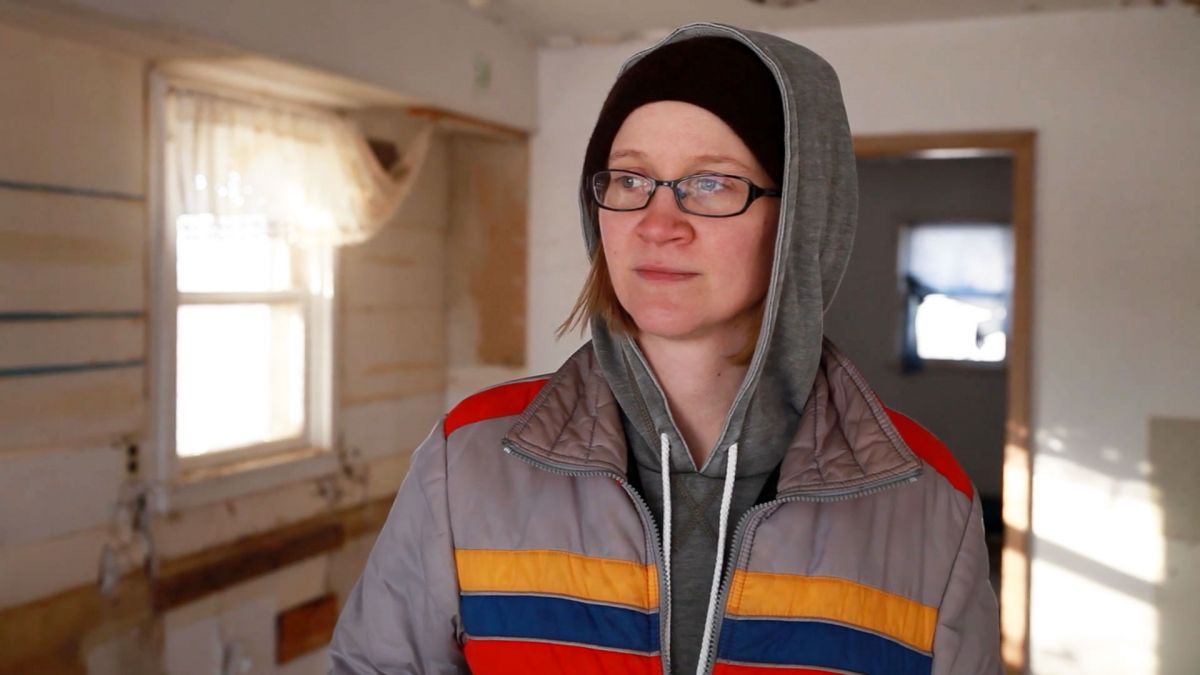The team behind the new Independent Lens film My Country No More, Rita Baghdadi and Jeremiah Hammerling, told us they were drawn to Hammerling’s native North Dakota to make this film “because his hometown, as well as much of rural America, was changing rapidly and we wanted to document those changes. And we also wanted to explore the importance of community.” The film won Best Feature at the Big Sky Documentary Film Festival.
A key glimpse into the filmmaking team’s approach can be found in their first-person piece written for IndieWire: “The best stories transport us into someone else’s life, if only for a moment. But we won’t go along for the ride unless we empathize with the characters. Empathy doesn’t just drive a good story, it is storytelling.”
“Though the film deals with the dangers of fracking,” they went on, “it was important for us to not make another Gasland. We wanted the story to be character-driven and that meant being open to showing how the industry also benefited a lot of people in the region. As filmmakers, our goal was to maintain that there were no easy answers, only different perspectives.”
“We are drawn to those experiences that connect and inspire us as human beings. Our company name Endless Eye comes from a passage in the Upanishads that says, ‘Not what the eye sees but that which makes the eye see, that is the endless eye.’ It is only possible for us to recognize ourselves when we see ourselves through each other’s eyes.”
The Los Angeles-based team wrote to tell us a bit more about their film.
What do you want audiences to take away from having seen My Country No More, or how do you hope it inspires people?“It is only possible for us to recognize ourselves when we see ourselves through each other’s eyes.”
We hope our film inspires rural Americans to become stakeholders in the future of the land and their communities.
What were some of the biggest challenges you faced in making the film?
The weather! We took a total of 12 trips to film out in western North Dakota, half them in the winter. The only way to get to Williston at the time was to fly into Fargo and drive 8 hours west, which we sometimes had to do in dangerous conditions. One night, while filming in the Walmart parking lot, it was -65 degrees with the wind chill. Coldest I’ve ever felt in my life. Also, the mosquitoes in the summer…
It seems like it also must have been a logistically challenging film in other ways, too?
Trying to capture the proximity between farms and industrial projects in western North Dakota was a challenge precisely because everything is so spread out. Neighbors who live “next door” to one another in the country could still be a half a mile away from each other. In trying to illustrate the industrial creep on open land, it was difficult to capture just how much the oil boom was changing and impacting the environment where these people live.
How did you gain the trust of all the Trenton residents featured in the film, including of the main family?
The Rider family that appear as central characters in our film had been friends of Jeremiah’s family for a long time before we began filming. Culturally speaking, many parts of the Midwest are fairly reserved about airing their personal affairs, so we spent a significant amount of time hanging out and not filming, which we believe helped make everyone more comfortable.
What would you have liked to include in My Country No More that didn’t make the cut?
We had to leave a few really interesting nightmares and dreams on the cutting room floor, along with some pretty cool stylized imagery. Many of the townspeople had experienced interesting dreams that were directly related to the oil boom but ultimately it was too hard to fit them into the film organically.
For instance, in one scene we had to cut, a woman dreams that her house is on fire only to wake up and realize it’s the fiery flare from an oil well reflecting on her window. We found a very haunting stylized way to shoot it but we couldn’t find a way to include it that flowed with the overall storyline.
What are your three favorite/most influential documentaries or feature films?
Hard to pick just three! Harlan County, USA; Burden of Dreams; and Tarnation.
What film/project(s) are you working on next?
We are in late production on a feature doc titled Eternal Life Fan Club about two guys on a mission to cure death.

